Localized mass selection, new family breeding format
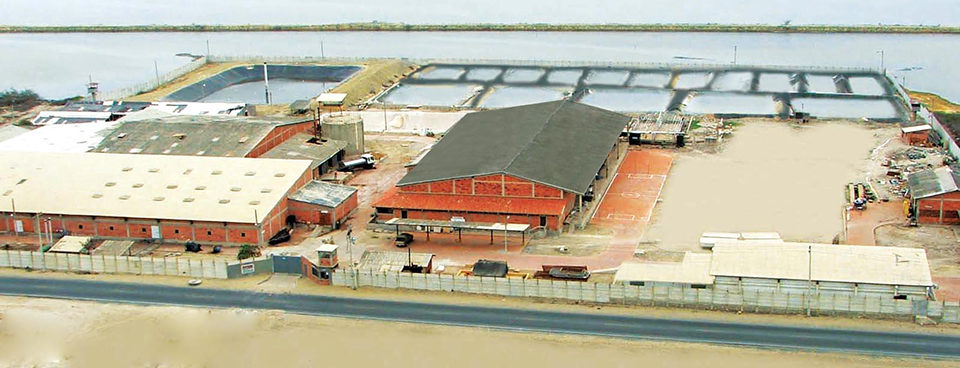
In comparison to the very successful livestock and plant-breeding efforts executed over nearly a century, the genetic improvement of penaeid shrimp has been carving its history in only the last two decades, with significant accomplishments but also a long road ahead.
These accomplishments with shrimp include the development of specific pathogen-free shrimp lines, establishment of now-classic family programs relying on elastomer tagging, definition of experimental protocols for specific disease challenges and successful selection for disease resistance.
Commercial lines of shrimp with enhanced reproduction and growth traits enabled the boom of intensive Litopenaeus vannamei culture systems in Asia. For the extensive South and Central American shrimp production systems, however, with their large earthen ponds, low stocking densities and limited management, genetic improvement contributions have been more modest.
Latin American production
There has been a reluctance to work with specific pathogen-free (SPF) or even High Health animals in South and Central America, and to adopt formats and protocols that have been successful elsewhere. The genetic improvement models attempted have yet to really keep pace with the unique and distinctive features of the regions’ production models in providing significant and sustainable contributions to the production output.
Some argue that without a major overhaul of the main production system features, genetic improvement could be a doomed and useless proposition. Others emphasize negative correlations between growth and the disease resistance or tolerance attributes that are so essential in the regions. But all would perhaps agree that at the heart of the matter the issue of genotype-environment (GxE) interactions is one of, if not the main cause for the modest successes obtained so far.
The wide array of environments to be considered and the limitations of a family-breeding program format that relies on elastomer tagging or genetic markers certainly limit the number of relevant commercial field tests that can be conducted.
The authors are currently exploring two alternative breeding models that face the GxE issue with solutions that could advance breeding.
Mass selection of local lines
Ecuador, where the first commercial shrimp grow-out facilities in the world were established in the late 1960s, now has over 150,000 ha of shrimp farms. The country is justly proud of its rich history and traditions in shrimp production. One of its peculiar features is the fragmented nature of the industry, with very large maturation operations that solely focus on the production of nauplii.
Texcumar is one of the largest maturation facilities in Ecuador, with a total of 10 maturation rooms, 100 maturation tanks and the capacity to produce over 50 million nauplii daily. The large scale opens the door to new concepts and alternative formats in shrimp breeding.
In December 2010, Texcumar partnered with six large producers representing over 7,000 hectares of shrimp ponds with the objective of shaping a genetic program focused on the improvement of growth rates. The idea was to start with somewhat modest objectives and means, establish ways to objectively measure outcomes, gain confidence in the power of genetics and, if successful, venture into a more sophisticated program a few years down the road.
The crux of the program is the development of separate shrimp lines for each of the six producers with each line designed to match their localized needs. The starting point was an inventory of the genetic variability available, relying on the utilization of sets of genetic markers to characterize the different lines and enable the shaping of a framework that would allow effective long-term inbreeding management.
From each associate farm, high-intensity selections are made from commercial ponds under commercial conditions at relevant target harvest weights. Two to four selections are accomplished from each farm every three months, with individual random samplings conducted immediately prior to the commercial harvests.
Selected animals are taken to Texcumar, where their further growth is managed to reproductive competence. Females are later screened by polymerase chain reaction (PCR) for infectious hypodermal and hematopoietic necrosis virus, and only IHHNV-negative females are finally stocked in the maturation room for each associate farm. Larviculture is conducted separately from each maturation room, with a traceability framework that ensures the return to each farm of only postlarvae derived from the broodstock selected from that farm.
Data analysis
Historic data were collected from the farms for the three years preceding the program. All new stockings are followed throughout grow-out, and harvest data are collected to establish statistical analyses and valid comparisons for the outcomes of the program.
With nearly 11 months completed, the first commercial harvests are now taking place. Initial evaluations of the growth trends after this first-generation mass selection should be available within a few months.
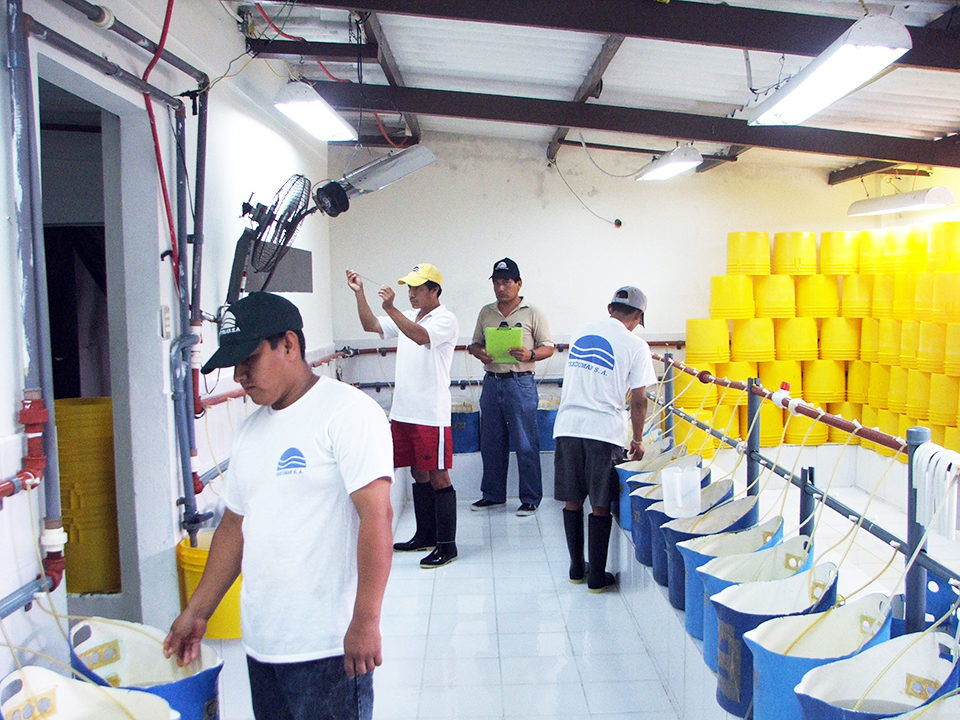
Simple, effective selection
As simple and low cost as it is, this multiple-line mass-selection genetic system has the potential to be effective due to the high selection intensities applied and adequate addressing of genotype-environment interactions. It could deliver somewhat rapid results, enabling confidence in the power of genetic improvement and opening the door to more significant investments and commitments in subsequent years.
It can only be implemented when the production system operates under a framework that does not recognize merit in the utilization of SPF or High Health animals and even further, believes in a production path based on the gradual build-up of disease resistance or tolerance in animals that survived and are bred from endemically contaminated environments. Furthermore, a multiple-line mass-selection genetic system like this can only be implemented when large maturation facilities are available.
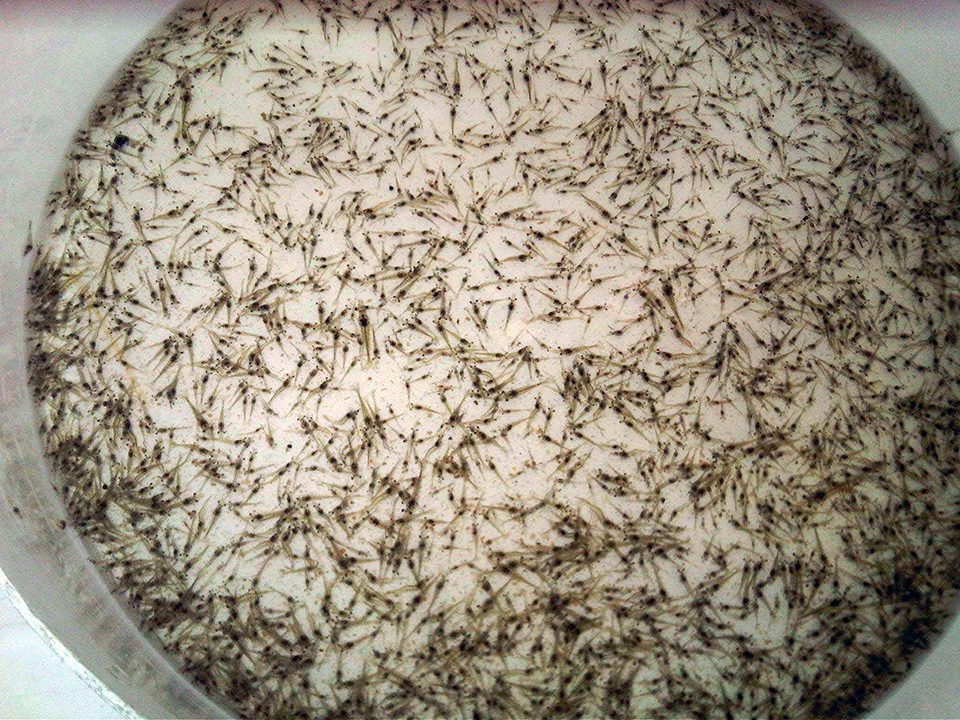
The selection differentials effectively accomplished by the program in this first year of execution and some theoretical estimates of the selection responses that could be expected under a number of simplified assumptions are provided in Table 1.
Rocha, Realized selection differentials, Table 1
| Average Realized Selection Differentials Farm | Average Realized Selection Differentials Harvests | Average Realized Selection Differentials Harvest Weight (g) | Average Realized Selection Differentials Weekly Growth Rate (g) | Average Realized Selection Differentials Days to Constant Harvest Weight | Average Expected Genetic Gains* Harvest Weight (g) | Average Expected Genetic Gains* Weekly Growth Rate (g) | Average Expected Genetic Gains* Days to Constant Harvest Weight |
|---|---|---|---|---|---|---|---|
| 1 | 3 | 4.1 | 0.21 | -18 | 1.23 | 0.064 | -5.5 |
| 2 | 3 | 1.9 | 0.08 | -10 | 0.57 | 0.024 | -3 |
| 3 | 3 | 3.0 | 0.21 | -13 | 0.90 | 0.063 | -4 |
| 4 | 4 | 3.3 | 0.21 | -17 | 0.98 | 0.063 | -5 |
| 5 | 2 | 4.3 | 0.11 | -35 | 1.28 | 0.033 | -11 |
New family program format
This involves a change from sib tests in experimental ponds to progeny tests in commercial ponds, unifying commercial and genetic evaluation systems into a single and joint framework, a modified dairy cattle model for shrimp breeding.
Classic family programs adopted for shrimp breeding are adequate when there are no important GxE interactions in the target production system. But when these interactions are present – as is the case in South and Central America – and when the family identification systems that are possible prevent many good field performance tests under real commercial conditions, the classical family format becomes very limited in its capability to deliver effective genetic improvement for the target commercial environments.
Alternative shrimp-breeding family program formats that can capture all the relevant commercial data needed for effective family genetic selections are in demand. Mass-selection schemes can be accepted for some short-term limited objectives, but should be considered transient steps toward more sustainable breeding goals and strategies.
Why is the classical family format unable to capture sufficient commercial data? Because one family is just a single spawn of 60,000 postlarvae at the most, which can only stock one 0.6-hectare pond at 10 shrimp per square meter. The commercial realm is beyond the framework and basic structure of the family format, for we cannot stock entire ponds with single families. Because of that, we need an identification system like elastomer or genetic markers that for some reason impose severe limitations on the efficacy of the genetic program.
System shift
How can we overcome this? Change the mindset from testing sibs to testing offspring. If we stock a commercial maturation tank with females from family A and males from family B, and have two or three replicate maturation tanks per specific family cross, we can obtain 4 million nauplii/day during 60 to 90 days.
With 2 million PL10 of any given specific family cross available, we can stock 20 hectares a day at 10 shrimp per square meter. With the operational flexibility and infrastructure to stock larvae five or six days every month, and if broodstock are kept in production for three months, this yields the capacity to stock 360 ha of ponds with progeny from a specific family cross.
A commercial maturation operation with 120 tanks in Ecuador can keep in production at any given time 40 specific family crosses with three replicate maturation tanks per family cross. If each family is represented in three crosses, that could mean over 1,000 ha of commercial ponds stocked with half-sib progeny from a single family.
Of course we need to remember the obvious: We only need special systems for family identification when we cannot stock entire ponds to a single family. With the system proposed, we can do exactly that, therefore discarding any need for elastomer tagging or genetic markers and shaping a breeding program whose genetic evaluation framework reflects and even derives from real commercial data.
There would be no artifacts or proxies, with no tank effects, covering all grow-out periods from stocking to harvest, without the need for problematic sampling schemes and without the influence of nuisance effects that can hinder the accuracy of the genetic evaluations, as is the case with elastomer tagging or genetic markers.
Perspectives
The breeding system described here is basically the one so successfully adopted for dairy cattle breeding for over 50 years. It is a progeny-testing scheme, while the classical family format for shrimp breeding is a sib-testing scheme. There are no doubt issues and limitations in this system being proposed, but the effort to overcome them would be more than compensated for by the invaluable genetic benefit of having thousands of hectares of real commercial data effectively structuring genetic evaluation and breeding programs.
Large commercial maturation facilities are needed, but these already exist in Ecuador. Some operational and equipment adjustments need to be made in the commercial larviculture systems, and one generation would be lost in a system shift, but the current genetic improvement system is not effective.
The new program introduces variability to the commercial system. Especially in the first generations, some families will have poor commercial results, but again, when the current genetic system is not very effective, that should not be a major issue.
A small subset of broodstock from the tested families needs to be kept reproductively competent for a long period of time, awaiting the commercial results before the next generation crosses can be made from the selected families. This will likely be a major bottleneck. Also, grow-out cycles longer than 120 days will likely not be accommodated by this system, but there are ways to remedy this limitation.
(Editor’s Note: This article was originally published in the January/February 2012 print edition of the Global Aquaculture Advocate.)
Authors
-
João L. Rocha, Ph.D.
Iowa Genetics and Texcumar
Km. 2.5 Via San Pablo
Monteverde, Santa Elena, Ecuador -
Rafael Verduga
Texcumar
-
Holger Martinez
Texcumar
-
Hugo Mario Armijos
Texcumar
-
Pedro Conforme
Texcumar
Tagged With
Related Posts

Health & Welfare
A holistic management approach to EMS
Early Mortality Syndrome has devastated farmed shrimp in Asia and Latin America. With better understanding of the pathogen and the development and improvement of novel strategies, shrimp farmers are now able to better manage the disease.
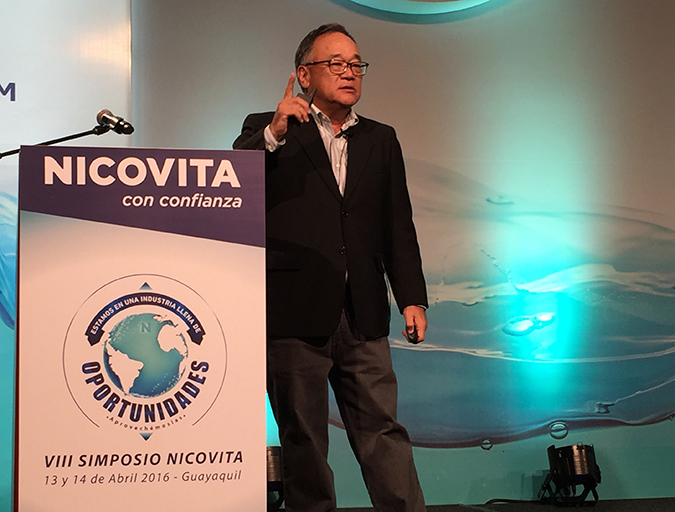
Responsibility
CP aquaculture expert stresses proper pond management, design
Shrimp farmers can look to the chicken-farming industry for guidance on proper pond management. At the Nicovita Symposium in Ecuador, Dr. Dean Akiyama of Charoen Pokphand encouraged shrimp producers to overcome challenges at hatchery level.
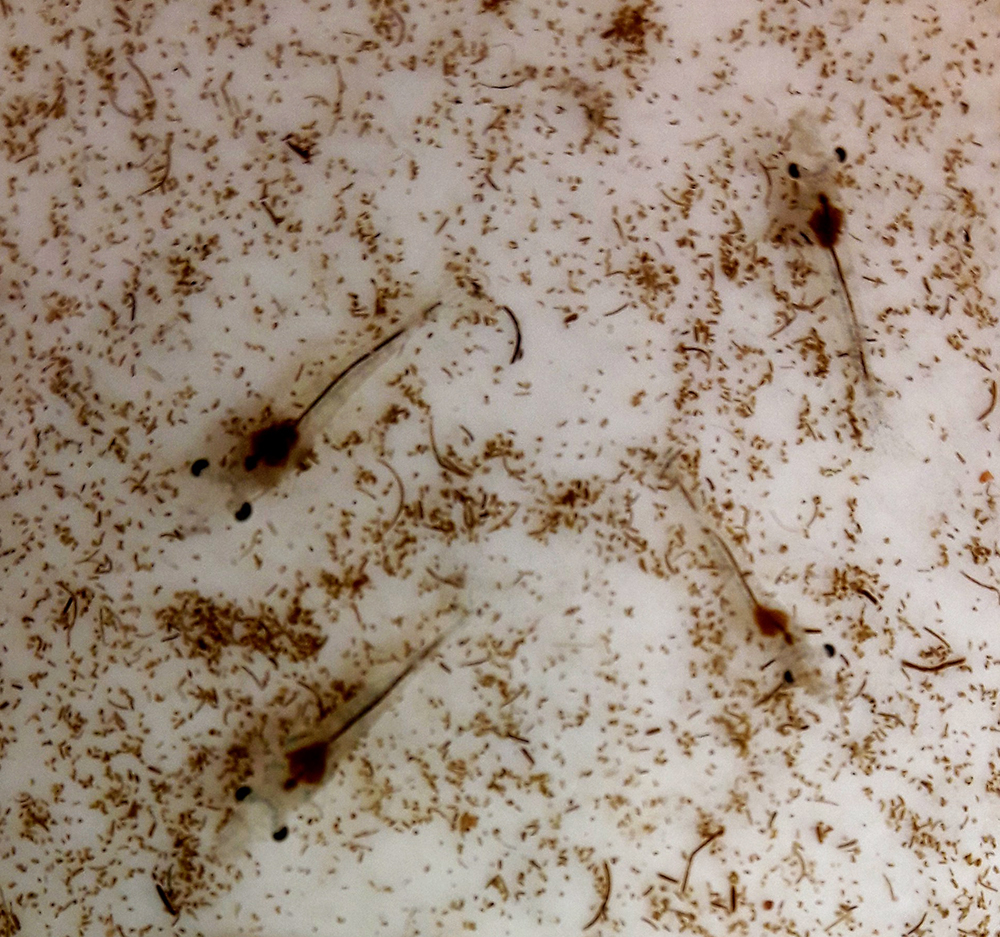
Health & Welfare
Clinical case report: EMS/AHPND outbreak in Latin America
Behind the successful control of Early Mortality Syndrome (EMS), or Acute Hepatopancreatic Necrosis Disease (AHPND), in a Latin American shrimp nursery.
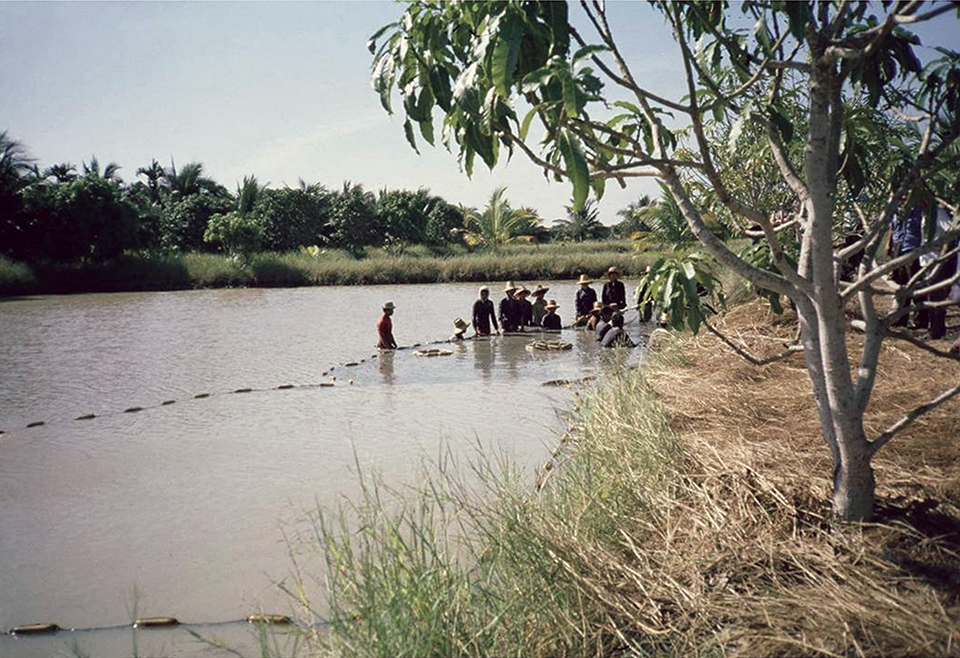
Health & Welfare
‘Big picture’ connects shrimp disease, inbreeding
Disease problems on shrimp farms may be partly driven by an interaction between management practices that cause inbreeding in small hatcheries and the amplification by inbreeding of susceptibility to disease and environmental stresses.


